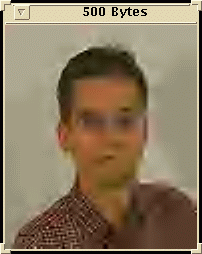File Formats and Compression
There are many different kinds of File Formats and Compression Standards. Sometimes a Compression Standard will require/imply a certain file format. Sometimes a File Format will allow the user to choose one of a set of compression standards to apply to the data. In the case of, for example, JPEG it is both a Compression standard and a set file format. We discuss below both some of the File Formats and Compression Standards. This is not a complete list.
File Formats
| Format | Description |
|---|---|
| Indeo (version X.X), |
|
| QuickTime |
|
| JPEG |
|
| GIF (GIF87a, GIF89a) |
|
| TIFF |
|
| FLC/FLI |
|
| PS, EPS |
|
| BMP |
|
| PICT |
|
| PBM,PGM,PPM |
|
| TGA |
|
| XBM |
|
Compression
Address the problem of reducing the amount of data required to represent an image or video or some other data type. There are a huge variety of data compression techniques, but only a few have been standardized. Compression is an active area of research in the computer field. For example, CCITT (Comité Consultatif International Téléphonique et Télégraphique) has defined a standard data compression technique for transmitting faxes (Group 3 standard) and a compression standard for data communications through modems (CCITT V.42bis). In addition, there are file compression formats, such as ARC and ZIP. There are also, format compressions for both images and video such as JPEG (Joint Photographers Expert Group) and MPEG.

Lossy Compression
LZW CompressionShort for Lempel-Zif-Welsh, a popular data compression technique developed in 1977 by J. Ziv and A Lempel, and later refined by T. Welsh. It is the compression algorithm used in the GIF graphics file format, which is one Web.
The patent for LZW is owned by Unisys, which for many years allowed anyone to use the algorithm for free. Then in 1995, Unisys suddenly decided to charge a license fee. There was an uproar from the Compuserve and Web communities, and Unisys backed down somewhat, though they still enforce the licensing requirement for commercial applications.NOTE: PNG, short for Portable Network Graphics, and pronounced ping, a new bit-mapped graphics format similar to GIF. In fact, PNG was approved as a standard by the World Wide Web consortium to replace GIF because GIF uses a patented data compression algorithm called LZW. In contrast, PNG is completely patent- and license-free. Current versions of Netscape Navigator and Microsoft Internet Explorer support PNG only through plug-ins, but future versions will support the format as an alternative to GIF and JPG. There are already some other browsers that support PNG natively.
JPEG
JBIG
Click here
Motion JPEG
Motion-JPEG extends the JPEG standard to support video compression. In Motion-JPEG, each frame in the video is stored with the JPEG format. For video content that radically changes from frame to frame, this compression standard can approach the compression rate of MPEG.
Fractal Compression
Click Here
The Discrete Cosine Transform
Short for Discrete Cosine Transform, a technique for representing waveform data as a weighted sum of cosines. DCT is commonly used for data compression, as in JPEG. This usage of DCT results in lossy compression. DCT itself does not lose data; rather, data compression technologies that rely on DCT approximate some of the coefficients to reduce the amount of data.
MPEG
Click Here Overview:
Comparison of MPEG1-*
Wavelet based Compression
The newest emerging techniques that are gaining popularity and may take over for JPEG and MPEG standards are those using Wavelets instead of Discrete Cosine Transforms. The Wavelet Transform is one that captures local rather than global frequency information. As such, proponents of its use suggest that it may be able to more compactly describe the essential information in the data.
